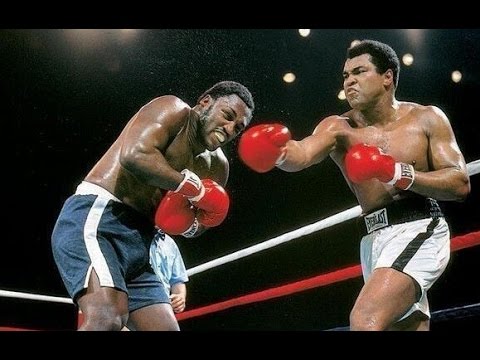How Muhammed Ali, Joe Frazier and Satellites Changed TV History

The year 1975 is notable for many reasons: The Vietnam War ended with the fall of Saigon; John Mitchell, the Attorney General of the United States, was found guilty of the Watergate cover-up; fugitive Patty Hearst was captured in San Francisco, and NBC aired the first episode of "Saturday Night Live." To many of us laboring in the shallow trenches of cable television, September 30th, 1975 was the night that changed the course of television history.
Before I get into the details of the "Ali vs. Frazier Thrilla in Manila" and its enormous impact on the television landscape, let me set the stage. It actually goes back to 1972 when a little known New York City-based cable operation, Manhattan Cable, introduced a new service called Home Box Office (HBO). Chuck Dolan, later the founder of Cablevision Systems, had brought in Jerry Levin to head the new programming service. The pay subscription network was delivering limited sports and movies to subscribers via microwave from New York City and reaching subscribers in more distant states by mailing video tapes to cable systems, not a great strategy to scale. This service reached about 80,000 homes.
Levin knew he had to do something to make this service national, and he focused on using satellites to deliver network programing. The problem was the Federal Communications Commission had yet to grant cable the right to use satellites and the endeavor took a couple years to realize. By early 1975, Levin was in hot pursuit of an approval for satellite deployment and for an event that would galvanize the industry. He wanted to use this new technology for nationwide cable network delivery.
HBO had been carrying events from Madison Square Garden, including boxing events, which were popular among subscribers. Levin set his sights on the biggest upcoming boxing event, the Thrilla in Manila, the decisive third contested matchup between Joe Frazier and Muhammed Ali. He thought bringing that event live via satellite would prove the value of cable programming distribution. At the time, HBO was owned by Time Inc. Levin sought and obtained approval from the Time Inc. Board of Directors to move forward on his plan.
In anticipation of receiving a live satellite feed from Manila, Bob Rosencrans, President of UA-Columbia Cable Systems, installed a 10 meter satellite dish at their Vero Beach Florida Cable System. He was joined by Monte Rifkin, President of ATC Systems where he also installed a dish in Jackson, Mississippi. The stage was set. All systems were go.
One hundred and fifty members of the cable industry gathered and government dignitaries arrived in Vero Beach to await the start of the highly anticipated boxing match. Electricity was in the air. I know, because I was there to coordinate the press coverage and handle certain dignitaries. It was the event I had been searching for since 1968 when I wrote my master's thesis on satellite communications and their potential impact on the communications industry. In the interim, I had worked at the Federal Communications Commission, The Communications Satellite Corporations, as a TV producer, and in cable for Bob Rosencrans. That night I was there for my client, HBO. A confluence of experiences convened on that magical night.
Anticipation hung in the air. Jerry Levin was actively chatting up the industry, while a somewhat anxious Vero Beach System team under the watchful eye of UA-Columbia VP of Engineering, Ken Gunther, paced waiting for the event to begin.
The fight came in right on time and crystal clear at 10:45 pm. Thunderous applause broke out. What a debut for the nascent cable industry! I don't know what the executives at the broadcast networks were thinking that night, but they missed the opportunity to televise what has ever since been rated the greatest heavyweight championship fight of all time. The results created a stampede in the cable industry to install 10-meter satellite dishes, from hilltop headends to office parking lots of cable systems countrywide.
The night that changed the course of television history was not only the disruptive event that shaped the mammoth industry we know today; it was the night that launched my career as soon to be founder of USA Network. The moment is etched into my mind. Bob Rosencrans and I walked out of the screening party well after midnight into the glow of the moon's reflection. We were both still basking in the success of the event, when Bob turned to me and said, "Tonight, Kay, your dream comes true." And indeed it did, but that is another story for another time.
The opinions and points of view expressed in this commentary are exclusively the views of the author and do not necessarily represent the views of MediaVillage.com / MyersBizNet, Inc. management or associated bloggers.


